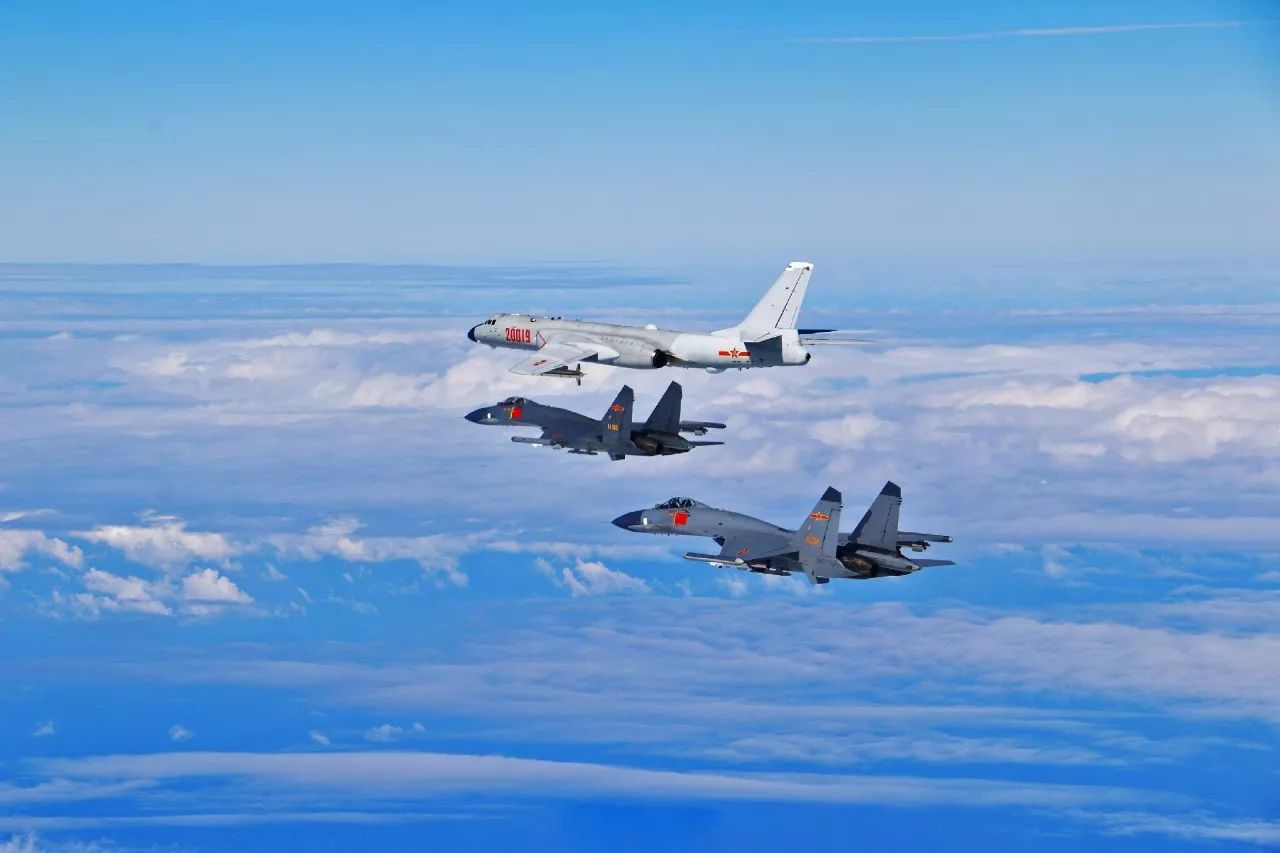“China’s recent move to sail [its sole aircraft carrier] near Taiwan has highlighted the need for Taiwan to go ahead with a plan to build its own submarines.”
Defense Minister Feng Shih-kuan, Jan. 13, 2017
Taiwan is at a dead end when it comes to acquiring new submarines from overseas and is now committed to building its own subs. The stakes are high, as submarines could deny any hostile fleet access to Taiwanese waters. But Taiwan is starting from scratch and very few allies are willing to help.
This article looks at some of the challenges that Taiwan will face as it attempts to produce a modernized and expanded submarine fleet domestically.
Context
Beijing’s failure to compel Taiwan into accepting its terms for “peaceful unification” and President Xi Jinping’s remarks to the effect that the situation cannot be allowed to perpetuate itself has led some observers to conclude that a Chinese attack on Taiwan is once again a possibility.
For some years, the balance of power across the Taiwan Strait has shifted in China’s favor. The People’s Liberation Army’s (PLA) modernization of its air force, navy and army has caused challenges for Taiwan’s armed forces, which has sought to find alternatives to its loss of superiority.
Taiwan’s political and military leadership are well aware of these potential contingencies. Consequently, they have come to the conclusion that emphasis is to be put on asymmetrical warfare — that is, an all-out defense strategy aimed at securing the inviolability of its territory from any threat.
Finding the best weapon
Taiwan’s strategic planners have been seeking to acquire more submarines, seen by many as the asymmetrical weapon par excellence. Among the different scenarios of a PLA assault on Taiwan, two of them could be severely hampered by an expanded Taiwanese submarine fleet:
- An amphibious invasion, for which the PLA is modernizing its navy;
- A military blockade to starve Taiwan’s economy and population, if the Chinese were to decide to force Taiwan to surrender without firing a shot.
Submarines’ capability to fight alone, to operate and strike silently underwater, would be feared by any blockading or invading fleet. Therefore, the use of submarines would be extremely effective in denying access to Taiwan’s sea lines of communication (SLOC) without seeking direct confrontation with PLA surface vessels. The waters of the Taiwan Strait are shallow but extremely noisy, which would allow submarines to remain virtually undetected. Moreover, Taiwan’s submarines do not need to sail far from their harbors, a significant advantage in terms of operability and speed.
Developing submarines would also help Taiwan avoid a useless arms race for surface ships with the PLA Navy (PLAN); and a submarine can be extremely cost-effective given its immense firepower relative to its small size.
Imbalance in the Strait
Presently, Taiwan possesses just four submarines. Two of them are World War Two antiques: the former U.S. Tench and Balao-class, sold to Taiwan during the 1970s (those are not Guppy-class subs, as is often claimed). Those were used for training purposes but are now near inoperability and more prone to raise historians’ interest than to fight against PLAN vessels. In the late 1980s, Taiwan also purchased two Dutch-made ZWAARDVIS MK2-class submarines (aka Hai Lung-class), which, despite their increasing age, are about to be upgraded.
Nevertheless, Taiwan’s submarine fleet is outnumbered by the PLAN. When it comes to comparable weaponry alone, the RAND Corporation estimated in 2015 that by 2017, almost 70% of the PLAN’s 60 diesel-electric submarines will be modern, meaning that they will be more recent than Taiwan’s two Dutch-built submarines.
The current IDS program
For decades, the government has tried to purchase submarines without success. Taiwan has painful memories of the aborted submarine deal with the United States in 2001 due to technical and political complications. All these failed developments, added to Chinese pressure on foreign submarine manufacturers, convinced the Taiwanese that it would be too costly and too complicated to purchase submarines overseas. Thus, in 2014, the growing ambition of producing indigenous submarines finally translated into the Indigenous Submarine Program (IDS), especially so after Admiral Chen Yeong-kang became chief of the ROCN.
In September 2014, Tsai Ing-wen (DPP chairperson at the time) endorsed the DPP’s Seventh Defense Policy Blue Paper, which drafted an agenda for an IDS program. The paper stated that the main limitation for building submarines domestically resulted from a lack of consistent political will. On July 7, 2016, Navy Command Headquarters Chief of Staff Vice Admiral Mei Chia-shu told a legislative committee that he planned to obtain a design blueprint from the Netherlands, where both Hai-lung class submarines were built, and use it as the basis for the first domestically built ship. This move came with the decision to provide a life extension program (LEP) for both Hai Lung / ZWAARDVIS MK2 Dutch-build units and to replace both World War Two era Tench-class submarines.
In August 2016, Taiwan-based China Shipbuilding Corp (CSBC) created the indigenous submarine development center in Kaohsiung to prepare for the development of between four and eight diesel-electric submarines. A new design for the IDS was to be released by CSBC’s Submarine Development Center (SDCC) at the end of last year, though no information appears to have been made publicly available since. According to estimates, the first submarine is scheduled to be delivered in 2024 and put into service in 2025. Of course, this information is not to be taken for granted as the program still faces various issues.
External challenges
The IDS program was welcomed by the U.S. as a concrete engagement from Taiwan in taking care of its own defense. “CSBC’s establishment of a submarine development center is a positive sign […] Taiwan’s defense industry is taking the submarine program seriously,” Mark Stokes, executive director of the U.S.-based Project 2049 Institute, said following Taiwan’s announcement. The message that Taipei sends to the United States is of the utmost importance under the current Trump presidency, given the U.S. president’s ostensible reluctance to support its Asian allies if they do not meet their share of the defense burden. When it comes to Taiwan, it has been a constant position of U.S. administrations that any softness on defense can hurt the United States’ commitment to helping Taiwan. To answer such concerns, the DPP has promised to increase the defense budget to higher levels, but has yet to deliver on its promise.
Taiwan has contacted other countries capable of building submarines, such as France, Japan and Germany. In April 2015, then Taiwan Navy Chief of Staff Vice Admiral Hsiao Wei-min said that “more than 20 U.S. and European companies” had voiced their interest in working with Taiwan on the IDS program. However, Beijing is well aware that allowing other countries to work with Taiwan on its submarine program could in turn damage its increasing naval superiority in the Strait. So far, Beijing appears to have succeeded through political pressure in limiting some technology transfer by those countries to Taiwan. The latter issue was acknowledged by Defense Minister Feng Shih-juan, who referred to “outside pressure” (i.e., China) as the biggest challenge facing the project.
Internal challenges
In Taiwan, the IDS program benefits from wide political consensus, and the DPP has been proactive on the issue. However, Taiwan does not have the know-how to build such vessels, and the expected complexity of the program may complicate further discussions over the budget allocated to the IDS (the current Tsai administration has many other urgent concerns, including the transformation of a conscript army to an all-volunteer force and raising the defense budget to 3% of Taiwan GDP). Taiwan will have to sustain decades-long efforts to maintain its production capacity and to be able to continuously improve the quality of its submarines in order to remain competitive against PLAN units. |
In the event of a conflict, Taiwan should create a viable strategy to avoid having its submarines sunk during the first round of hostilities, or worse, having them stuck in their harbors due to intensive Chinese mine-laying in nearby waters. Thus, both financially and technically, Taiwan needs to be aware of the challenges and sacrifices that lie ahead for the IDS to provide a successful deterrent.
Conclusion
The idea of developing indigenous submarines is an excellent one. In theory, this is precisely the weapon Taiwan need to secure its waters. But practically no one is willing to help Taiwan in acquiring the necessary know-how to build its ships. Consequently, policy makers will have to show great political will to pursue a program that is likely to become increasingly expensive and unpopular among Taiwanese taxpayers in the long term.
But such are the costs for achieving a credible but also much needed naval deterrence at a time when the PLAN is accelerating the modernization of its maritime arsenal. China has not given up its desire to take over its democratic neighbor by force should it find it feasible.
Taiwanese may find it difficult to invest such amounts of energy and money in weapons, but one thing is certain: they cannot afford to be weak if they want to guarantee their freedom.
不入虎穴焉得虎子 (“Great rewards require a great risk”).
You might also like
More from Cross-Strait
Taiwanese Celebrities Who Bow to China: A Tempest in a Teapot
Taiwanese entertainers Ouyang Nana and Angela Chang have sparked controversy in Taiwan over news that they will perform at China’s …
In Memoriam: Lee Teng-Hui and the Democracy That He Built
The former president of Taiwan is the incontestable refutation of the belief that history is merely an impersonal force, that …
The Making of ‘Insidious Power: How China Undermines Global Democracy’
A new book released on July 30 takes a close look at the agencies and mechanisms of CCP 'sharp power' …









